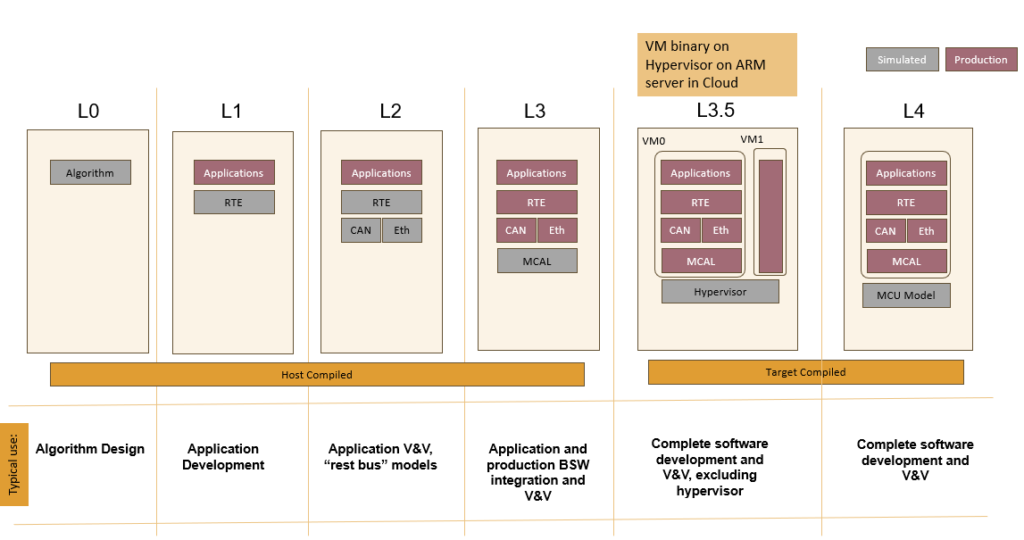Imagine a world where your car is as constantly evolving as your smartphone. That’s the promise of Software-Defined Vehicles (SDVs). These aren’t just cars with fancy screens; they’re computers on wheels, capable of learning, adapting, and improving over time.
Simply put, a Software-Defined Vehicle (SDV) is an advanced automotive, where a software manage and controls most of the vehicle functionality. From engine performance and braking systems to infotainment and navigation, software orchestrates nearly every aspect of the vehicle. This shift to software-centric design offers greater flexibility and enables more frequent updates and enhancements than traditional hardware-based systems.
But what’s holding back this automotive revolution?
The shift to SDVs introduces several challenges that must be addressed to realize their full potential.
One significant challenge is increasing systemic complexity. As vehicles become more software-driven, managing the numerous software functions and updates becomes increasingly unwieldy. The emergence of new Electrical/Electronic (E/E) architectures further complicates this landscape, necessitating robust systems that can handle this complexity. Additionally, testing and validating millions of lines of software code is a daunting task that requires precision and thoroughness to ensure safety and performance. With product cycles shortening, the pressure to bring vehicles to market quickly while ensuring quality adds another layer of difficulty.
Moreover, the availability of test benches and Hardware-in-the-Loop (HIL) systems is becoming a critical bottleneck as the number of software engineers working on automotive software increases. Automotive companies and OEMs are investing heavily in these systems to validate software in realistic, hardware-interactive environments. However, as the demand for such systems rises, traditional approaches may not scale effectively, especially given the need for cloud-based development to handle the volume and complexity of modern vehicle software.
This is where Virtual ECUs come into play. By virtualizing the Electronic Control Units (ECUs), developers can simulate and test software in a virtual environment, addressing many of the challenges associated with SDVs. Virtual ECUs are an essential tool for tackling systemic complexity by providing a scalable and flexible software development and testing platform. They enable comprehensive validation of software before it is deployed to physical hardware, significantly reducing the time and cost associated
Different Levels of Virtual ECU

To understand the capabilities and potential of Virtual ECUs, you first need to understand the different levels of abstraction that are commonly used:
- Level 0: Algorithm Design – Traditional hardware ECUs with dedicated functions. The basic building block simulates only the control logic of an ECU.
- Level 1: Application Development- This level consolidates some functions but doesn’t fully exploit the benefits of virtualization. Excludes middleware.
- Level 2: Application V&V- The virtual environment includes the application code and simulated middleware.
- Level 3: Application and Production BSW integration and V&V– This level incorporates the complete production middleware stack along with a part of the host operating system. Interfacing with a vECU is modeled at the bus or network level using abstracted hardware.
Understand this with an example-
Suppose you are an application software developer, developing and testing an infotainment cluster, or a heads-up display in a car. You do not need a complete unmodified software stack. It is enough to get RTE and the CAN stack.
In L3, the MCAL device drivers get replaced with a simulated version to provide an environment for testing applications.
- Level 4: Complete Software Development and V&V– The most detailed simulation of an electronic system on our scale. It is so detailed that you can take unmodified binary code, which is compiled for actual Hardware, and execute it on the L4 VECU with no changes.
The Need To Develop Level 3.5 VECU
With the changes in the electronic systems of the car, our automotive experts at Vayavya introduced L3.5. Bridging the gap between Level 3 and Level 4.
L3.5 leverages two distinct trends across the automotive and cloud industry. With a drive towards ECU consolidation, powerful high-performance computing platforms are replacing discrete single-function ECUs. Thus multiple functionalities are realized on a single compute platform. To ensure safety and reliability each functionality is implemented as a Virtual Machine on top of a Hypervisor on these compute platforms.
On the other hand, all the major cloud providers are providing ARM compute cores in their cloud. This ARM compute architecture in the cloud conforms to the ARM compute architecture on these High-Performance Compute platforms in automotive systems.
L3.5 Virtual ECU enables the automotive functionality of Virtual Machines that execute on the High-performance central compute to be executed unchanged on the ARM compute platforms in a cloud thus providing a Virtual ECU insofar as the application functionality embodied by these Virtual Machines is concerned.
Advantages of Using L3.5 over L3 and L4
L3.5 Virtual ECU enables development and testing in the cloud. In addition, it also-
- Simulate much faster than L4VECU
- Takes less development time compared to L4 VECU, hence lesser costs
- Able to execute target-compatible binary (unlike L3 VECU, which requires software to be recompiled for the host)
Why does Virtual ECU Matter in SDV Development?
The introduction of Virtual ECU addresses the challenges of SDV development.
- Systemic Complexity– With the availability of Virtual Software, the developers can identify and resolve H.W/S.W and S.W/S.W compatibility issues early in the design cycle
- Time To Market Need- Reducing the time to market the product by using “Shift Left”: Complete Software Development and System Testing Months Earlier. Promoting faster iteration, quicker feedback, and improved software quality.
- Test Bench and HIL Availability – By simulating ECU functions in software rather than using physical hardware, V-ECUs lower the costs associated with HIL testing setups. This includes savings on hardware, maintenance, and the space needed to house complex test benches.
- Cloud-Based Development – VECUs can be easily deployed on the Cloud.
- Test Millions of Lines of Codes – Automated checks within the CI/CD pipeline can enforce coding standards, perform security scans, and validate compliance with best practices. These checks act as additional layers of gatekeeping, ensuring that code is thoroughly vetted before deployment.
Virtual ECUs represent a significant leap forward in the automotive industry, providing solutions to the complex challenges of software-defined vehicles. By understanding the different levels of Virtual ECUs, including our flagship Level 3.5, you can appreciate how these advancements contribute to a more reliable, secure, and flexible driving experience.
Would you like to know more about VECU and the adoption challenges it comes with? Stay connected, as we talk about it in our upcoming blog!


